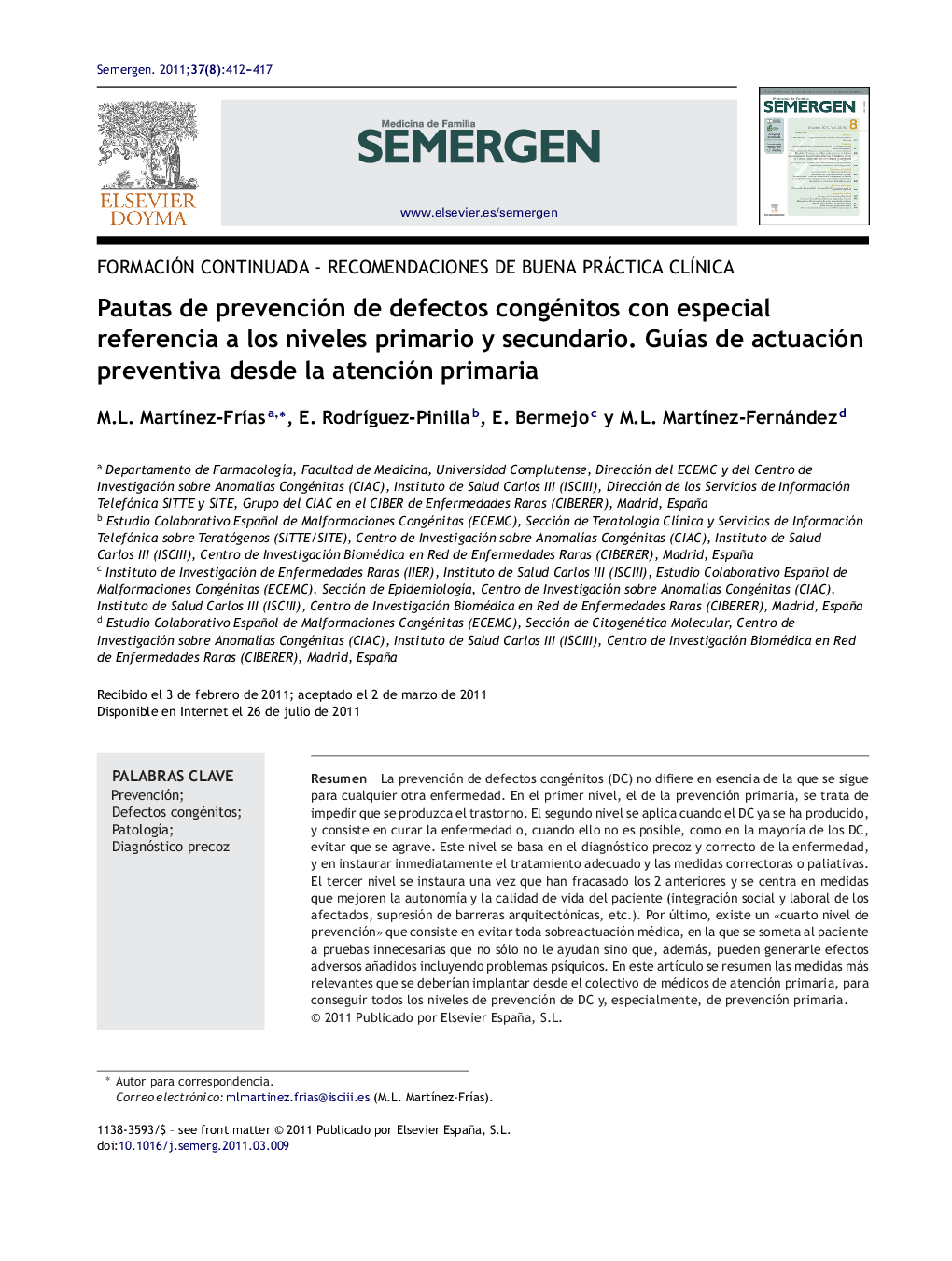| Article ID | Journal | Published Year | Pages | File Type |
|---|---|---|---|---|
| 3834877 | SEMERGEN - Medicina de Familia | 2011 | 6 Pages |
Abstract
There is essentially no difference in the prevention of congenital defects (CD) from that of any other disease. Primary prevention consists of preventing the causes that produce the disease. Secondary prevention is applied when the CD has already occurred, and consists of curing the disease, or when this is not possible, as in the majority of CD, to prevent it getting worse. This level is based on the early and correct diagnosis of the disease, and initiating immediate and appropriate treatment and corrective or palliative measures. The third level is started when the previous ones fail, and is focussed on measures that improve independence and quality of life (social and occupational integration of those affected, removal of architectural obstacles, etc.). Lastly, there is a “fourth level of prevention”, which consists of avoiding over-medication, in which the patient is subjected to unnecessary tests, which not only do not help the patient, but can also produce added adverse effects, including psychiatric problems. This article summarises the most important measures that Primary Care doctors should introduce to achieve all levels of CD prevention, and particularly primary prevention.
Keywords
Related Topics
Health Sciences
Medicine and Dentistry
Medicine and Dentistry (General)
Authors
M.L. MartÃnez-FrÃas, E. RodrÃguez-Pinilla, E. Bermejo, M.L. MartÃnez-Fernández,
